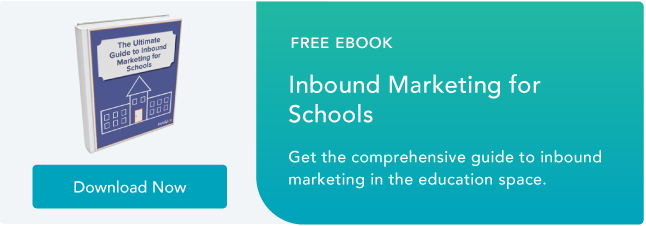
The education industry is going through a major disruption, facing pressures in demand, supply, and delivery.
Enrollment rates continue to decline, especially for four-year for-profit and two-year schools. Four-year universities see flat enrollment rates. As the pool of potential students gets smaller, the options they have for school are increasing. New programs like Promise and EQUIP offer financial incentives for students to attend community colleges and alternative educational institutions. The rise of massive open online courses (MOOCs) and other digital education services are forcing brick-and-mortar schools to expand student options and improve flexibility as to where and how students attend class.
All this is going on as attitudes of students and parents change as to how they research and select what sort of school to attend, and then which school to attend. Increasing costs, especially at four-year schools, which now take six years for most students to complete, has put many people's focus squarely on gauging what sort of return they'll get for the money they spend on school. What's the most cost effective way to earn credits? What skills will they have? What will their job prospects be?
And like every other purchase made today, consumer or B2B, students and parents are conducting most of their school research well before they ever make direct contact with a school.
The Empowered Consumer Student
You know well that the days of guidance counselors and school brochures controlling the selection process are long gone.
Students and parents have a remarkable array of information and resources to access when researching schools. Let's forget (only for a minute) about the content put out by the schools themselves.
There are also the review sites both for schools and individual teachers, and websites and blogs dedicated to guiding people through the selection process. Prospects have access, through social media, to the everyday conversations other students, parents, and prospects are having about the schools they attend or are thinking about attending.
There's no topic a prospect can't find online information to educate themself about whatever her educational priorities and motivations are. This newly empowered, self-directed prospect means educational marketing strategies need to evolve to meet them.
Leaning into the Digital Disruption
Traditional outbound tactics, like print ads and cold direct mailing, aren't where the prospects are. To meet enrollment goals, both in number and quality, schools have to be right in the digital mix addressing the issues prospects are already researching online.
Inbound marketing answers this call.
Inbound marketing uses digital capabilities to execute a strategy of targeted personalization by delivering online content that attracts and delights your prospects. This more personal approach is necessary to attract quality leads to your institution. You don't just need eyeballs. You need the right eyeballs.
Getting found by your best prospects online requires serving up the information they want, in the formats and places they prefer.
In order to do that, you need to a clear picture of who your target prospects are. These are your personas, fictional profiles that describe the motivations, challenges and demographics of who you're trying to reach. You can find free templates to use for your school here. Your personas probably aren't just different student types, but others who participate in their school decision. This means parents, teachers, and counselors.
Once you know who you're trying to reach, follow the inbound methodology to get quality leads into your database and nurture them through to application and enrollment. The inbound methodology for schools has four main steps: attracting web traffic, converting that traffic into leads, nurturing those leads into making inquiries to your school, and then closing them by getting the application. You can learn more about creating personas the moving them through each step in The Ultimate Guide to Inbound Marketing for Schools.
Where the Prospects Are
Google documented back in 2012 that 90% of students research higher learning institutions online. So we've learned a lot about how students do their education research. They're eager for information about areas of study, scholarship information, and campus life. They consult campus ratings as well. Everyone gets reviewed today.
Social media is another active source of information, so YouTube channels, Instagram accounts, and messaging apps are probably valuable distribution mediums for your content. Of course, your school's own website is their single largest resource about your school, and curious prospects will visit often – if you're serving up engaging, informative content they can't resist.
Use your social media and school blogs to answer the questions your prospects have, using the search language they use. This is the starting point for inbound. When you publish content with the right keywords and answering key prospect questions, your school's website and blog will start showing up in student searches. That's how schools are getting found by the right prospects in today's education market.
That's where all education searches start today - online. If your school wants to be pro-active about enrolling full classes of your ideal students, then it's time to get counter-intuitive and stop chasing them with brute force, outbound tactics.
Being pro-active in today's market means making them come to you by being a trusted, authoritative resource throughout their entire research process. They're not interested in being talked to. They want you to respond to their needs, and then they want you to anticipate their needs. That's inbound marketing.
from HubSpot Marketing Blog http://blog.hubspot.com/marketing/how-higher-education-marketing-has-changed
Via http://blog.hubspot.com/marketing/how-higher-education-marketing-has-changed

No comments:
Post a Comment